#araneomorphae
Text
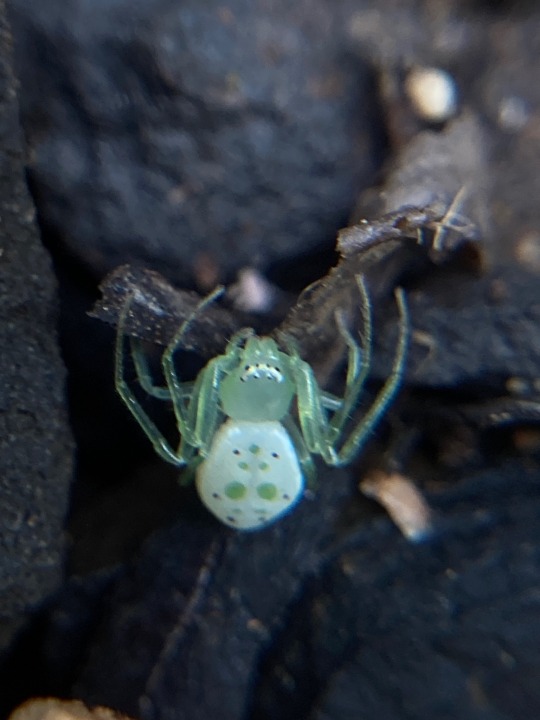

crab spider who fell out of the sky and almost into the creek. with a hockey mask
#spiders#arachnida#araneomorphae#thomisidae#tharrhalea#this is not a recent photo (it's from july) but it's still a sick tharrhalea
2K notes
·
View notes
Text

Maratus unicup
#Maratus unicup#jumping spider#peacock spider#spider#Arachnida#Araneae#Araneomorphae#Salticidae#Salticinae#Maratus#upl
24 notes
·
View notes
Text
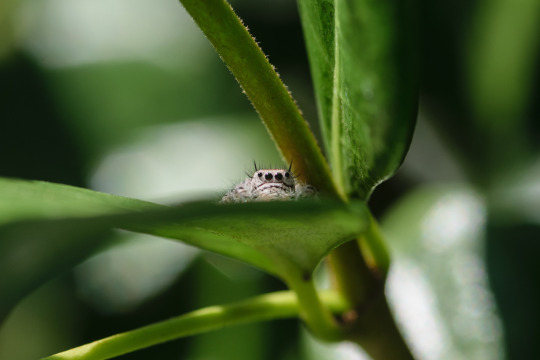

Phiddippus jumping spider (Salticidae)
#nature#animals#photography#arthropods#bugblr#science#invertebrates#macro photography#arachnida#spiders#araneomorphae#salticidae#jumping spiders#phiddipus
23 notes
·
View notes
Photo


Huntsman under a Polypore
Unidentified, genus Heteropoda
06/07/22
#huntsman spiders#Giant Huntsman Spiders#Heteropoda#Heteropodinae#Sparassidae#Sparassoidea#Entelegynae#Araneomorphae#Araneae#spiders#spider#spiders tw#Arachnida#Arachnids#Chelicerata#Arthropods#Arthropoda
163 notes
·
View notes
Note
META KNIGHT AS SPIDER PLS 🤲
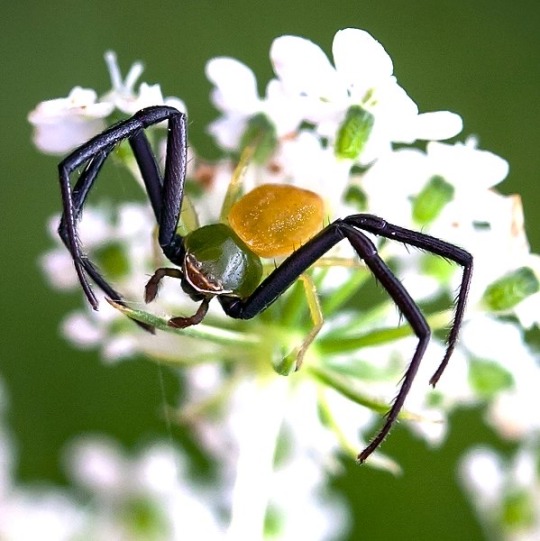
Misumenoides formosipes of the family Thomisidae! This ambush hunter prefers to keep himself concealed while attacking his prey. His long purplish legs also remind me of Meta Knight. Females of this species are often a solid bright yellow.
12 notes
·
View notes
Text

Latrodectus hasselti
11-APR-2023
Melbourne, Vic
#australia#victoria#melbourne#australian natives#native fauna#bug#arthropod#spider#redback spider#redback#australian black widow#arachnids#invertebrates#arthropoda#chelicerata#arachnida#araneae#araneomorphae#theridiidae#latrodectus#latrodectus hasselti#besser block
2 notes
·
View notes
Text

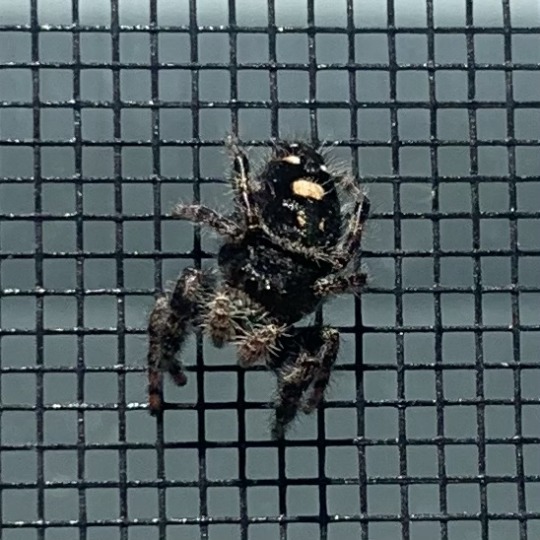

Little cutie hanging out in a window. Looks like a younger Phiddippus audax, but I wasn’t gonna bother them too much to look much closer.
1 note
·
View note
Text

that's a mygalomorph bitch I'm gonna kill you
#I clicked through and it IS from the wikipedia article on araneomorphae#as an. illustration of how mygalomorphs are different.#machine learning can't understand a lot of things and one of those things is context#ANYWAY the primary difference is that araneomorphs (so-called 'true spiders') have fangs that point inwards in a pincer motion#and those of megalomorphs (like tarantulas) are parallel to each other and point downwards#the more you know [jazz hands]#I was googling it mostly to check the spelling but also sometimes I will just... google a thing I already know because of ??? idk why?? lol#this isn't a 'googling a thing I already know IN CASE I'M SOMEHOW WRONG' situation although I do that too lmao#spider#spiders
1 note
·
View note
Text
Miguel has tapetum lucidum ( enhances visual acuity & sensitivity at night ); causing his eyes to shine / "glow in the dark" effect when illuminated, akin to other nocturnal predators ( araneomorphae spiders ). enables him to easily track your every move through the receptor system in his eyes. however, the trade off for improved night vision is limited vision from any visible light so the lenses in his mask are equipped with absorbent protection to keep him from going blind.
#( in other words he's a master at hunting you / prey down. )#( and he wears his suit at all times. he's all business. )
13 notes
·
View notes
Text
(I started typing this just to make a short, two-sentence post, but I ended up rambling and perhaps figuring something out)
The thing is that spiders are related to me. Some more than others, but any attempt to map it out beyond "moreso Araneomorphae than Mygalomorphae" seems useless and betrays that I'm limited by my preferences.
Sometimes I recognize them as my children, other-times it feels more like they are my siblings, or just that I was 'supposed to be born as a spider.' Yet I do not feel as if I myself am a spider... Or, do I? Maybe a 'spider-thing' or 'arachnid-creature' is what I may feel like, certainly I would prefer to have spiderlike characteristics than be an actual spider (like a drider, or a humanoid spider-person perhaps.)
but then again it is all wrapped up in the idea of what I think I "ought to be" and not what I "am."
As I'm typing this, I'm really coming to reflect and... I've used the spiderhearted term practically as soon as I heard of 'otherhearted' (even though I was frustrated that I could not narrow it down to a single species. But, perhaps I should consider calling myself spiderkin?
Jokingly and for shorthand I've called myself a spider, but... Maybe I really am spiderkin? I mean: I often think I'm supposed to be a spider, and feel as though I should have certain spider traits which I lack.. Ok. Huh.
A number of times at my old work, a coworker would note my ability to find spiders or affection for them, and I naturally, jokingly responded with: "Well, *I'm* a spider, so of course!" And saying that felt... Like saying my own name.
Dunno... Maybe I'll consider this
6 notes
·
View notes
Text
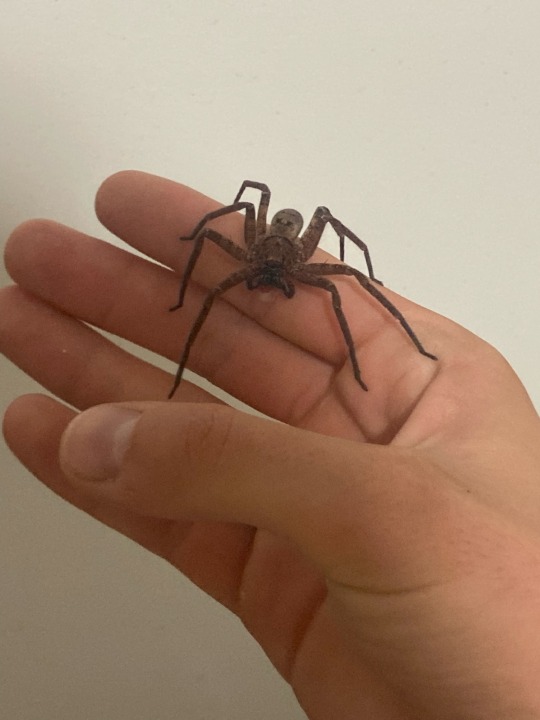

huntswoman who i had to move so she didnt drown in my shower. she proceeded to settle in on my hand for the next five minutes until i said bye and prodded her off
#spider#huntsman spider#araneae#araneomorphae#sparassidae#heteropoda#she also climbed up my leg and i had to stop her from hiding in my pocket. yes its a dark place but its not safe
79 notes
·
View notes
Text
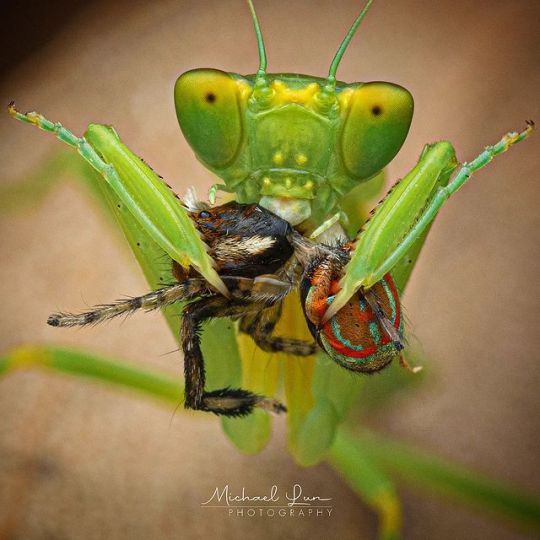
Garden Mantis & Common Peacock Spider
#garden mantis#mantis#mantid#praying mantis#Orthodera ministralis#Insecta#Mantodea#Mantidae#Orthodera#common peacock spider#spider#Maratus pavonis#Arachnida#Araneae#Araneomorphae#Salticidae#Salticinae#Maratus#upl
18 notes
·
View notes
Text
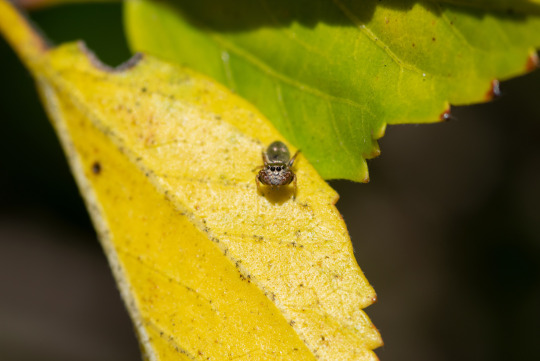
Sassacus vitis (Buttonhook Leaf-beetle Jumping Spider)
#nature#animals#photography#arthropods#bugblr#science#invertebrates#macro photography#arachnida#spiders#salticidae#araneomorphae#jumping spiders
7 notes
·
View notes
Photo

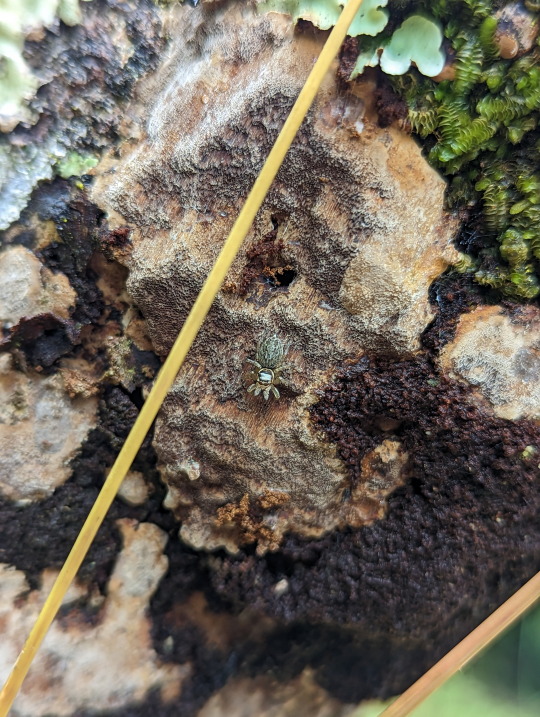
White Banded House Jumper
Maratus griseus
23/02/23
#Maratus griseus#Maratus#White Banded House Jumper#Peacock Spiders#Euophryini#Salticinae#Typical Jumping Spiders#Salticidae#Jumping Spiders#Entelegynae#Araneomorphae#Araneae#spiders#Arachnida#arachnids#arachnaphobia tw#spiders tw#Chelicerata#Chelicerates#Arthropods#Arthropoda#invertblr#invertebrates#bugs#bug#bugblr#bugs tw#insectblr#entomology
33 notes
·
View notes
Note

Do you know who this is ? I’ve never seen a spider this yellow before!
Looks like Cheiracanthium sp. aka a Yellow Sac Spider! They get a bad rap because people think they’re dangerous, but they’re perfectly safe and are unlikely to bite. This guy probably is living somewhere inside as the weather gets colder, will take care of some bugs for you and live in a little sac well out of the way!
Here’s a video essay about them that I recommend to learn more!!
youtube
6 notes
·
View notes
Text
A (Very) Brief Overview of The Spider Tree of Life

Let's start with the basics. All spiders fall into the following classification, from least to most specific:
Kingdom: Animalia (animals - cannot produce their own food, can move voluntarily, and are multicellular)
Phylum: Arthropoda (animals with jointed exoskeletons made of chitin)
Subphylum: Chelicerata (chelicerates - possess feeding appendages called chelicerae)
Class: Arachnida (arachnids - eight legs with an additional pair of appendages, fused head and thorax, and several more unique traits)
Order: Araneae (spiders - chelicerates that possess spinnerets for silk production, and have special male copulatory organs that we'll get into some other time)
Okay, so we've reached the clade that includes all spiders: Araneae. This is the order level. Just below order, spiders have a level called the suborder ("sub" meaning "under"). Here, spiders split into two suborders: Mesothelae and Opisthothelae.
Mesothelae is an incredible group of spiders with only a few extant (non-extinct) taxa. The defining characteristic of its members is an abdomen that's segmented by plates called tergites. This is a trait that was also present in the ancestors of spiders, so we may consider the Mesothelae to be "primitive" since they possess ancestral traits. All other spiders (the Opisthothelae) have abdomens that are fused into a single unit, which is the derived (non-ancestral) trait.

Heptathela higoensis, a member of the suborder Mesothelae. Photo by Marshal Hedin
Okay, so now we know the two suborders of spiders: Mesothelae (the "primitive" segmented spiders) and Opisthothelae (the non-segmented spiders). But we're not done yet! Opisthothelae divides into two infraorders ("infra" meaning "below" or "further on"). These infraorders are Mygalomorphae and Araneomorphae.
Mygalomorphae shares some common features with the Mesothelae - namely downward-facing chelicerae (mouthparts) and two pairs of book lungs (meaning four total). The araneomorphs, however, lack these ancestral features, instead sporting chelicerae that move in from the sides (causing the fangs to appear horizontal or "cross-acting") and fewer book lungs (only one pair or even zero!). Most araneomorphs also have tracheal systems, not unlike insects and myriapods (though the spider tracheal system evolved independently!).


Left: Atrax robustus, a mygalomorph with downward-facing chelicerae (photo by Tirin). Right: Cheiracanthium punctorium, an araneomorph with cross-acting chelicerae (photo by Rainer Altenkamp).
Finally, within the infraorders Mygalomorphae and Araneomorphae exist a myriad of diverse spider families. Araneomorphae is by far the more speciose and diverse of the two, but they both have their own unique charms. As of April 2023, there are a whopping 132 spider families recognized!
Follow for future posts about the many different families of spiders!
Information sources can be found below:
Coddington, Jonathan A. & Levi, Herbert W. (1991). "Systematics and evolution of spiders (Araneae)". Annual Review of Ecology and Systematics. 22: 565–592. doi:10.1146/annurev.es.22.110191.003025. JSTOR 2097274. S2CID 55647804.
Scientific name: Opisthothelae in Brands, S.J. (comp.) 1989-present. The Taxonomicon. Universal Taxonomic Services, Zwaag, The Netherlands. http://taxonomicon.taxonomy.nl/. Access date: 8 December 2010
Song, D.X.; Zhu, M.S. & Chen, J. (1999). The Spiders of China. Shijiazhuang, CN: Hebei University of Science and Technology Publishing House. ISBN 978-7-5375-1892-5.
Wheeler, W. C., Coddington, J. A., Crowley, L. M., Dimitrov, D., Goloboff, P. A., Griswold, C. E., … Zhang, J. (2016). The spider tree of life: phylogeny of Araneae based on target-gene analyses from an extensive taxon sampling. Cladistics, 33(6), 574–616. doi:10.1111/cla.12182
World Spider Catalog, 2023. Natural History Museum Bern. http://wsc.nmbe.ch, version 24.0 [accessed 30 April 2023].
#spiderblr#spiders#science#biology#taxonomy#zoology#arachnology#entomology#wildlife#animals#Araneae#bugblr#arthropods
7 notes
·
View notes